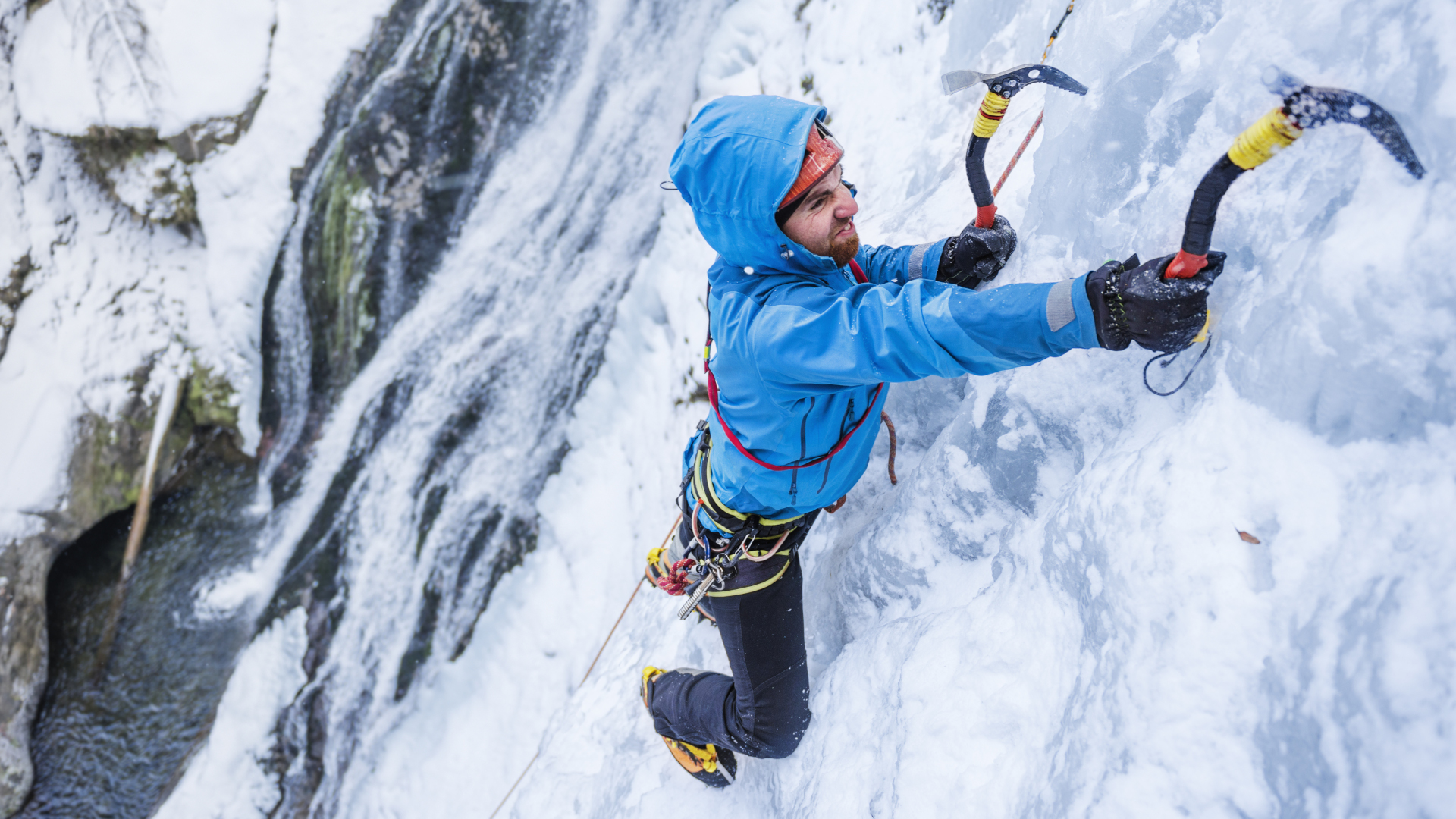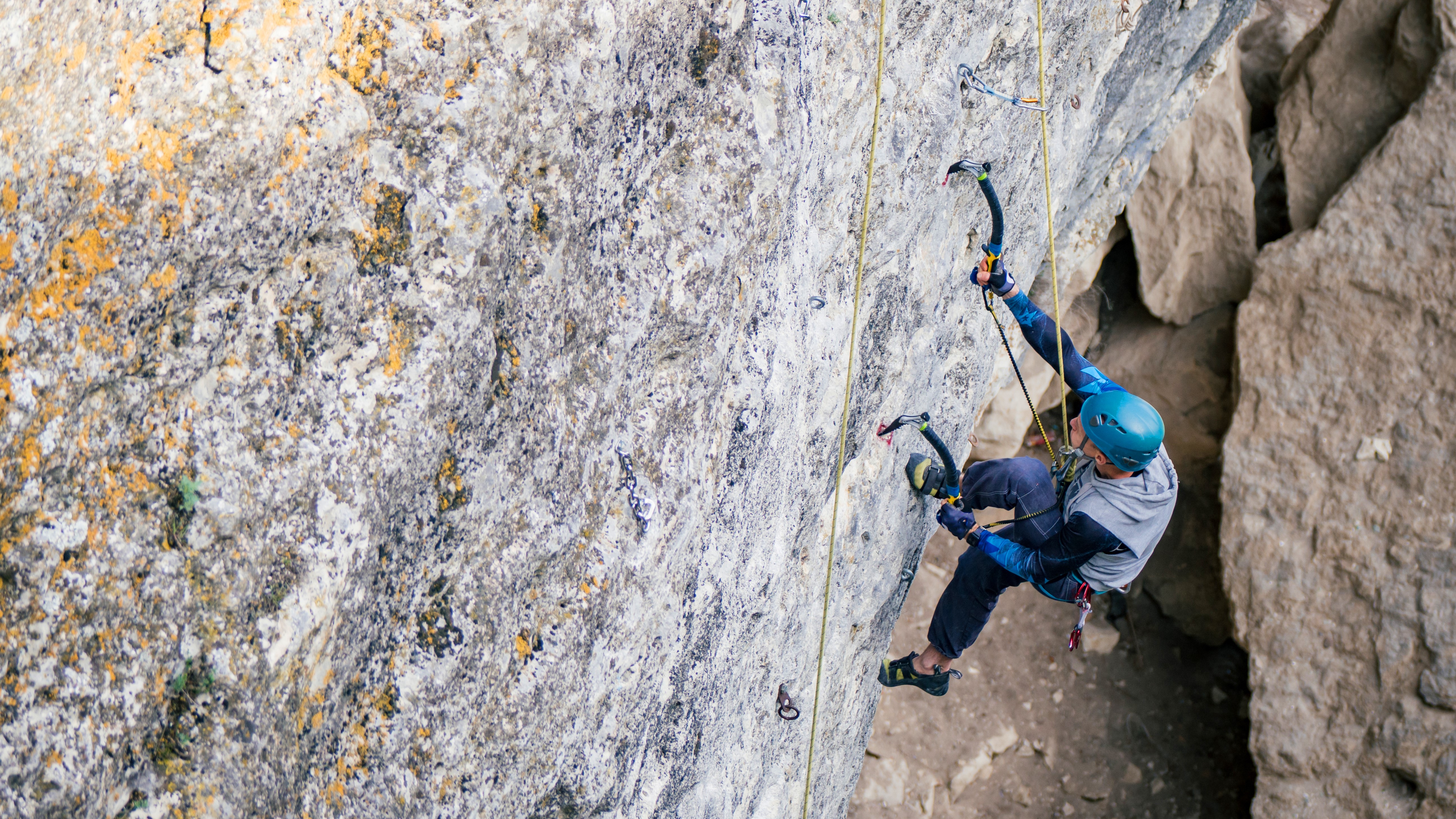A quick guide to mixed climbing and dry-tooling
Climbers around the world are taking up mixed climbing and dry-tooling to keep their climbing season going through the seasons amid variable conditions

Some of the best rock climbing spots offer year-round climbing, in parts of Utah and California for example, but for many of us, the arrival of winter (or in some parts, autumn), signals the end of outdoor rock climbing season. Either you move indoors to the climbing wall, hang up your climbing shoes and start waxing your skis, or for those that live in high alpine zones and have the nerves for it, you start ice climbing.
Ice climbing seems like a great winter solution for those who like to adventure vertically, but with variable conditions (and let's face it, climate change), a good sheet of ice isn’t always easy to find. Or sometimes it’s easy to find, but it’s high up and requires rock climbing to reach. That’s why lots of winter climbers around the world are taking up mixed climbing and its subsidiary technique dry-tooling. In this article, we cover the basics of what those two terms mean, where you can do them, and what you need for this flexible approach to climbing outdoors.

What is mixed climbing?
Mixed climbing takes place on a combination of rock and ice, as well as snow and frozen turf, and uses a mix of ice climbing gear such as axes, crampons and screws, as well as its own specialized gear, including climbing shoes with integrated crampons. Mixed climbing techniques vary according to the demands of the terrain and require the climber to shift between different skills and approaches, such as trad, sport and ice climbing as well as its own specialized techniques, primarily one called dry-tooling.
What is dry-tooling?
Dry-tooling emerged out of mixed climbing and has become a sport in its own right in recent decades. This style of climbing involves using ice axes to climb rock, and was originally devised to reach hanging ice walls – sheets of ice that aren’t reachable from the ground. When dry-tooling, you might insert the pick of your ice axe into a tiny crimp that you’d usually hold with your fingers or into a crack that you’d place a cam into when trad climbing. You’re usually still on belay for safety but swinging your ice axes up into the rock and using them to pull yourself up.
Dry-tooling competitions have been taking place in Scotland since 2003, where mixed climbing suits the winter conditions (ice and snow aren’t guaranteed like they are in the high Rockies) and rock type. Dry-tooling is considered controversial by some because the damage done to the rock flies in the face of climbing etiquette. However, it should be noted that dry-tooling is often done on choss, whereas many trad climbers tend to prefer a more solid piece of granite, meaning the two don’t usually take place on the same route and you’re not likely to see the damage as a climber. Then again, even a small amount of damage per climber builds up over time – forty years ago, hikers were happily scree running in the Lake District with no idea that their actions would result in the complete destruction of those scree fields.

Why go mixed climbing?
Advocates of mixed climbing and dry-tooling make the case that doing so opens up a whole new world of possibilities. Rather than just limiting yourself to one type of climbing, mixed climbing helps you to develop your skills in bouldering, sport, trad and ice climbing as well as new techniques. It also allows you to climb year-round in places where you might otherwise not be able to, and attempt different types of rock and climbing surfaces. In doing so, you become a better all-round climber and improve your problem-solving abilities since even the same route can change from day to day according to the weather.
Where can you go mixed climbing?
We’ve already mentioned that mixed climbing is big in Scotland where it’s common up in the Highlands, but it’s also popular in Colorado’s San Juans, the Canadian Rockies, the Dolomites and the Alps.
All the latest inspiration, tips and guides to help you plan your next Advnture!

What do you need for mixed climbing?
First off, unless you’re an experienced ice climber, you need to go out with a guide to start. There’s lots to learn, from how to use the equipment to the techniques such as dry-tooling. In terms of gear, you’ll need a lot. Here are the basics that you’ll need just to get started:
- Two ice axes
- Crampons and mountaineering boots or mixed climbing boots
- A mixed climbing rack with screws, stoppers, pitons and hooks
- Climbing rope
- Climbing harness
- Carabiners and slings
- Climbing helmet
- Backpack
- Headlamp
- Best hiking gloves
Julia Clarke is a staff writer for Advnture.com and the author of the book Restorative Yoga for Beginners. She loves to explore mountains on foot, bike, skis and belay and then recover on the the yoga mat. Julia graduated with a degree in journalism in 2004 and spent eight years working as a radio presenter in Kansas City, Vermont, Boston and New York City before discovering the joys of the Rocky Mountains. She then detoured west to Colorado and enjoyed 11 years teaching yoga in Vail before returning to her hometown of Glasgow, Scotland in 2020 to focus on family and writing.

